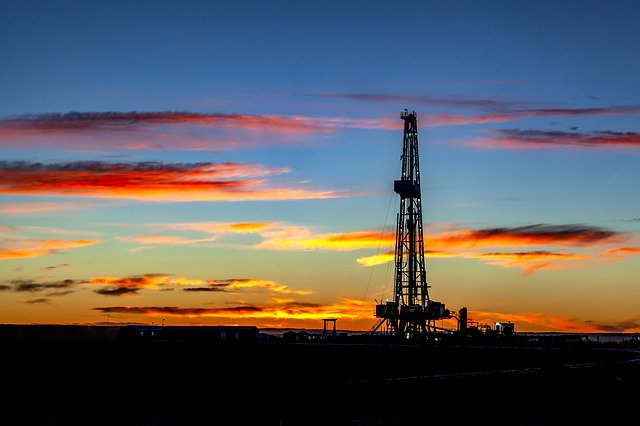Social License as a Mechanims of Development of Unconventional Hydrocarbons in the Department of Cesar-Colombia

Published 2019-06-30
Keywords
- Hydraulic Fracturing,
- Unconventional Hydrocarbon,
- Social Acceptance
How to Cite
Abstract
The hydraulic fracturing activities in source rocks have been very controversial in recent years around the world and in the last two in Colombia. It has allowed to form associations of environmentalist who in most cases give wrong and generalized information about this type of operations to delegitimize it and take it to a decisive context between water or oil, generating fear to communities who in some way feel dissatisfied with the industry. Part of this dissatisfaction, have been the lack of economic development perform in their region, neither due to corruption or bad investment of the resources received of royalties. The modification of the royalty law, increased the discontent which initially were to the level of communities until take them to the local government. This situation and adding the disinformation against the industry has managed to mobilize entire communities with the aim not to permit hydraulic fracturing operation in their terrains, stopping the normal development of these. The acceptance of unconventional hydrocarbon projects in Colombia, depend more on the acceptance of these for the communities than the compliance of the legal requirements, since when communities approve to develop this kind of project, theirself will defend it, not allowing the entrance of radical groups against of exploration/exploitation of unconventional hydrocarbon.
Downloads
References
Benítez, N. (2013). Caracterización del nuevo sistema general de regalías y su efecto fiscal en los municipios de sexta categoría del departamento de Boyacá. Finanzas y Política Económica, Vol. 5, No. 1, pp. 151-178. Universidad Nacional de Colombia.
Bradshaw, M., (2017). Recommendations for Understanding Public Perceptions and Attitudes of Environmental Impact of Shale Gas. Warwick Business School, University of Warwick. M4ShaleGas Consortium – Report D20.1
Brändle C., Lis, A., Fleischer, T., Evensen, D., Mastop, J. (2016). Prerequisites for a Social Licence to Operate in the (Shale) gas Industries. M4ShaleGas Consortium – Report D17.2
Brunsting, S., Mastop, J., De Boer, H., (2017). Recommendations on Public Perceptions Research and Public Engagement in Shale Gas Projects. M4ShaleGas Consortium – D19.2
Brunsting, S., Rietkerk, M., & Mastop, J., (2017). Final report on the lessons learned from related energy technologies and on the implications from these lessons for future approaches to shale gas, both for public engagement activities as well as for public perceptions research. M4ShaleGas Consortium – Report D19.3
Cárdenas, J. C., Núñez, R. D. C., Perez, E. R., & Tovar, J. J. (2014). Shale plays: Pronósticos de producción a partir de simulación numérica predictiva. Fuentes: El reventón energético, 12(1), 6.
Cerón, K. L. P., Socha, L. C. P., & Cárdenas, J. C. (2016). Estudio de la perdida de conductividad debida a empotramiento de propante en formaciones de shale mediante simulación numérica. Fuentes: El reventón energético, 14(2), 85-97.
EPCC (2017). Topline findings of a survey conducted in four European countries in 2016. European Perceptions of Climate Change.
Fernandez, L., Quintero, Y., & Carrillo, Z. H. C. (2015). Análisis de la fragilidad para identificar sweet spots en formaciones de shale gas. Revista Fuentes, 13(2).
Lisl, A., & Brändle, C., (2017). Public perceptions of shale gas in various Eu Member State, public attitudes and communication strategies developed around shales gas investments (update 2015-2017). M4ShaleGas Consortium – Report D17.3
Murillo, C. A., Gomez, O. A., Cancino, O. P. O., & Muñoz, S. F. (2015). Aplicación de modelos para la generación de la isoterma de adsorción de metano en una muestra de shale y su impacto en el cálculo de reservas. Revista Fuentes, 13(2).
Thomas, P., & Pidgeon N., (2017). Shale in The Us & Canada: A Review of Perceptions and Engagement. Understanding Risk Group, Cardiff University, UK Center for Nanotechnology in Society, University of California at Santa Barbara (UCSB), USA. M4ShaleGas Consortium – Report D18.3
Thomas, P., Pidgeon N., Evensen, D., Partridge, T., Hasell, D., Enders, C., Harthorn, B. (2017). Shale Gas Engagement in The Us and Canada: A Case-Study Review and Recommendations for Best Practice. Understanding Risk Group, Cardiff University, UK. M4ShaleGas Consortium – Report D18.1
http://wsp.presidencia.gov.co/Normativa/actos-legislativos/Documents/2011/ActoLegislativo-05-18julio2011.pdf
http://www.un.org/es/sections/issues-depth/population/index